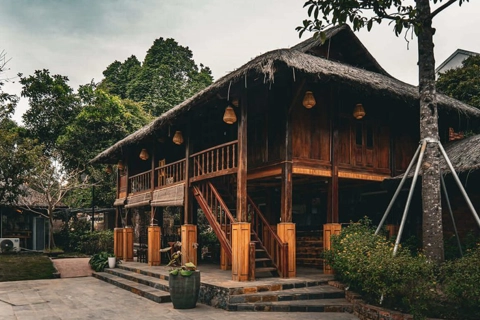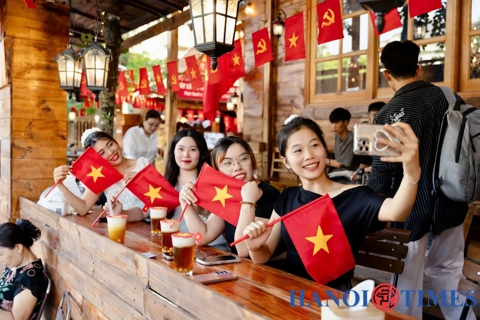Travel
Vietnam welcomes 13 million international arrivals in 2017
Jan 04, 2018 / 03:17 PM
2017 is considered a successful year for the tourism sector, with 13 million international tourists arriving in Vietnam, up by three million against the previous year.

Foreign visitors arrival Hanoi Walking Street. Photo: Hong Hanh
|
In the first half of 2017, the United Nations World Tourism Organisation (UNWTO) revealed the world’s top 10 fastest-growing tourist destinations, with Vietnam in sixth position. The Southeast Asian country also led Asia-Pacific with growth of 31.2 percent. The UNWTO described Vietnam as not a stranger to tourism with long-standing history, culture, rich cuisine and natural attractions.
Vietnam also received international tourism awards in 2017. Notably, the InterContinental Danang Sun Peninsula Resort set a record as it was honoured as the World’s Leading Luxury Resort for the fourth consecutive year. Meanwhile, the JW Marriott Phu Quoc Emerald Bay was named the World’s Best New Resort by the World Travel Awards. Vietravel became the first Vietnamese travel company to be honoured as the World’s Leading Group Tour Operator 2017.
The good performance during 2017 was attributable to the sector’s concerted efforts and several policies, including a two-year pilot e-visa programme for citizens of 40 countries launched on February 1, and extension of visa exemption for certain countries. Many provinces have worked to improve tourism service and quality and the investment environment to attract investment in the sector.
In June 2017, the National Assembly approved the Law on Tourism, which took effect on January 1, 2018. Decrees and circulars guiding the execution of the law are being finalised to drive tourism development. Vietnam hopes to serve at least 16 million international tourists in 2018 and 17 to 18 million foreign holidaymakers in 2020.
Despite high growth in the past few years, Vietnam’s tourism still lags behind other ASEAN countries, especially in terms of competitiveness, due to poor products and strict visa requirements. Particularly, the World Economic Forum (WEF)’s Travel and Tourism Competitiveness Index put Vietnam at 34th in natural resources, 30th in cultural resources and 37th in tourism workforce. However, regarding the overall hospitality industry, WEF put Vietnam at 67th among 136 countries in tourism competitiveness.
With 10 million international arrivals in 2016, Vietnam was still inferior to Thailand with 32.6 million foreign tourist arrivals, Malaysia with 26.8 million and Singapore with 16.4 million.
Accordingly, Nguyen Quoc Ky, chairman and general director of Vietravel, pointed out shortcomings of local tourism products such as inconsiderable number of products, overlapping products in different localities and lack of shopping centers and amusement parks to increase visitors’ spending.
Despite an increase in the number of international guests, their average spending tends to fall over the past years. According to a survey of the Vietnam National Administration of Tourism in 2014, spending of a foreign visitor to Vietnam totaled some US$1,100, below US$1,300 ten years earlier. In 2014, an international tourist to Vietnam spent US$125 a day on average, below some other ASEAN countries such as Thailand (US$150) and Singapore (US$153).
In addition, visa policy a stumbling block, policy shortcomings on visa application and immigration procedures are other obstacles to tourism sector growth. Only visitors from 23 countries to Vietnam are exempted from visa application and they enjoy a shorter visa-free stay than in other countries, reducing the competitiveness of local tourism and the added value of the sector.
Meanwhile, Thailand has offered visa exemptions for tourists from 61 countries, Malaysia 55 countries and Singapore 157 countries. Moreover, Vietnam’s online visa and visa on arrival services are as not as good as in other countries.
As for solutions to develop the sector, Nguyen Dinh Cung, president of the Central Institute for Economic Management, said the country should offer visa exemptions for more countries.
Tourists from developed countries do not care about visa application fees, but lament complex visa issuance procedures. Therefore, Vietnam should relax visa requirements, exempt visas for tourists from more countries, develop online visa service and simplify visa on arrival procedures.








